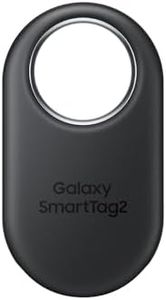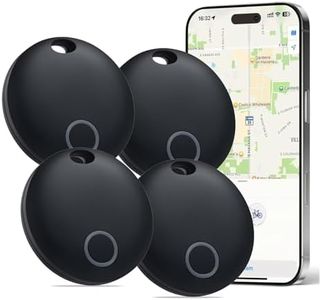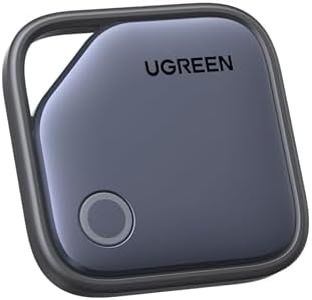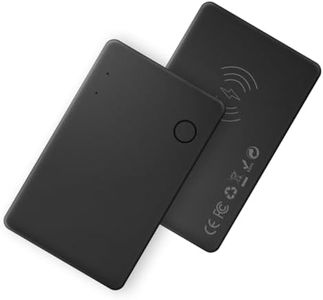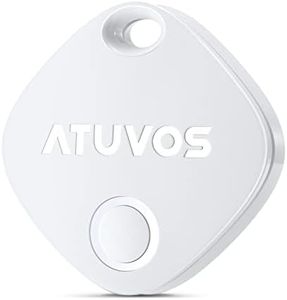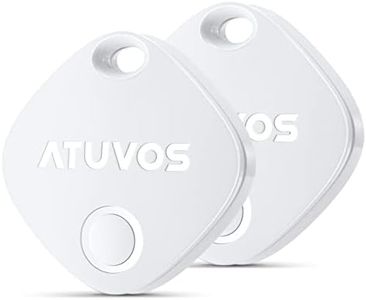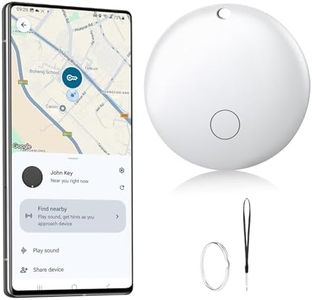We Use CookiesWe use cookies to enhance the security, performance,
functionality and for analytical and promotional activities. By continuing to browse this site you
are agreeing to our privacy policy
10 Best Key Finders
From leading brands and best sellers available on the web.By clicking on a link to a third party's website, log data is shared with that third party.
Buying Guide for the Best Key Finders
Choosing a key finder can save you a lot of stress if you often misplace your keys, bags, or even wallets. Key finders are small gadgets designed to help you quickly locate your valuables using sound alerts, lights, or even your smartphone. When picking a key finder, consider where and how you’ll use it—whether you need something loud, far-reaching, phone-compatible, or easy to attach. Understanding the main specifications will guide you to a product that fits your daily habits and comfort level.RangeRange refers to the maximum distance over which the key finder can communicate with your phone or remote. It's crucial because it determines how far away you can be from your lost item and still locate it. Ranges can be short (under 50 feet), medium (up to 150 feet), or long (over 200 feet). Short range works for small apartments or offices, medium is suitable for most homes and medium spaces, while long range is helpful if you often lose things outdoors or in larger areas. To choose, think about where you tend to lose your keys: inside your home, car, or outside in parks or parking lots.
Battery LifeBattery life indicates how long the key finder can work before you need to replace or recharge its battery. Some use replaceable coin-cell batteries lasting 6 months to a year, while others offer rechargeable batteries lasting a few days to weeks. If you prefer low maintenance, go for longer battery life, especially if you're using the gadget on something you can't easily check or recharge often, like a rarely used spare key.
Alert VolumeAlert volume is the loudness of the sound the key finder makes during activation. This matters if you’re in a noisy household, have hearing difficulties, or need to find your keys under a pile of stuff. Volumes under 80 decibels are quiet, suitable for silent environments or office use. Between 80 and 100 decibels is medium and works for most home settings. Loud alerts, over 100 decibels, are easier to hear outdoors or in loud places. Choose louder options if you often search in busy or noisy areas.
Attachment MethodAttachment method tells you how the key finder connects to your keys or other items. Common options are keyring holes, adhesive backing, or clips. If you intend to swap it between items, a keyring or clip is more flexible. For permanent attachment, like to a remote or wallet, an adhesive back is handy. Consider what you’ll attach it to and how often you’ll move it before making your choice.
App Compatibility and FeaturesApp compatibility refers to whether the key finder works with your smartphone and what features the app provides, such as map location, last seen history, or integration with digital assistants. Some only work with Android or iOS, while others support both. Advanced features like community finding (where other users can help locate your lost item) or phone-finder feature (making your phone ring even if it's on silent) may also be included. Look for compatibility with your device and features that match your routine: if you crave simple ringing, basic is fine; if you want tech extras, go for a feature-rich app.
Water ResistanceWater resistance protects the device from water damage. This is vital if you’re likely to expose your key finder to rain, spills, or use it on items prone to getting wet, like gym bags or outdoor gear. Basic models might handle occasional splashes (rated IPX4), while more robust ones fend off full submersion (rated IP67 or higher). If your usage involves outdoor or wet environments, prioritize higher water resistance. For mostly indoor use, basic protection is usually enough.
